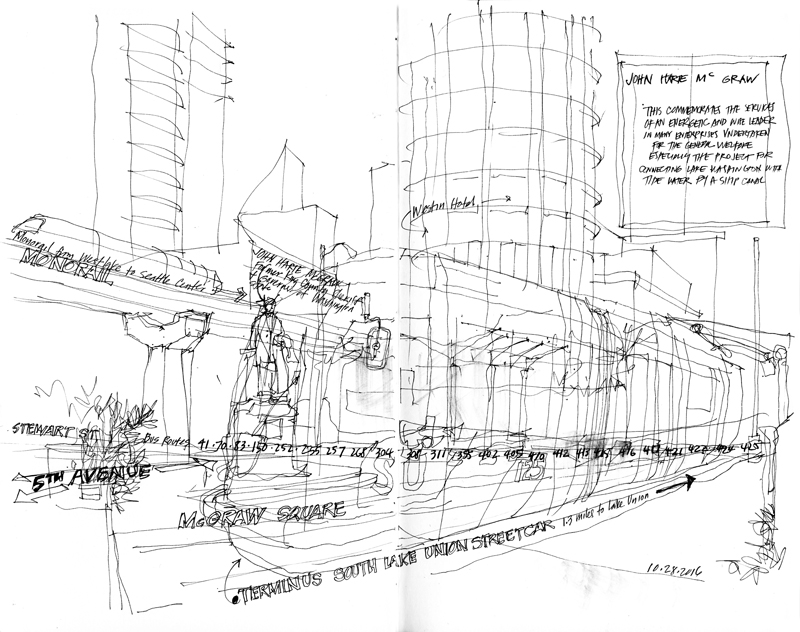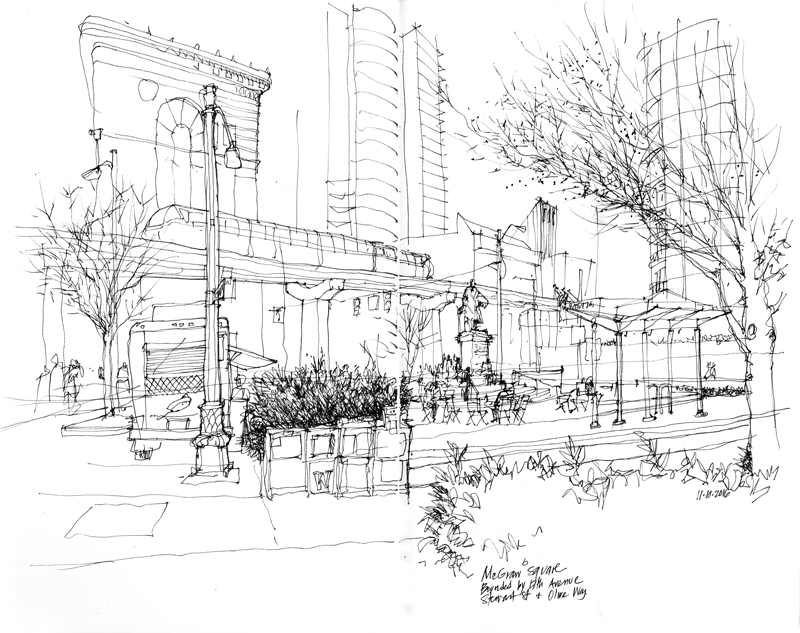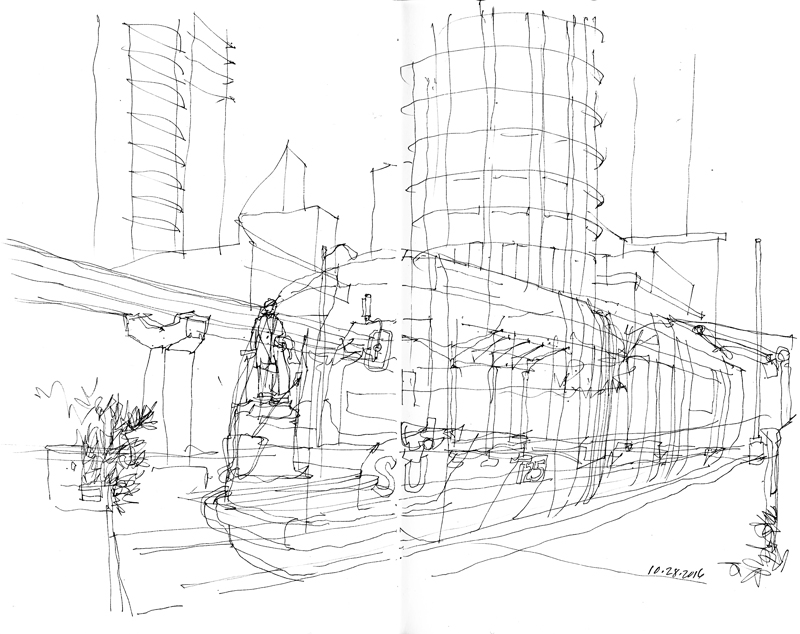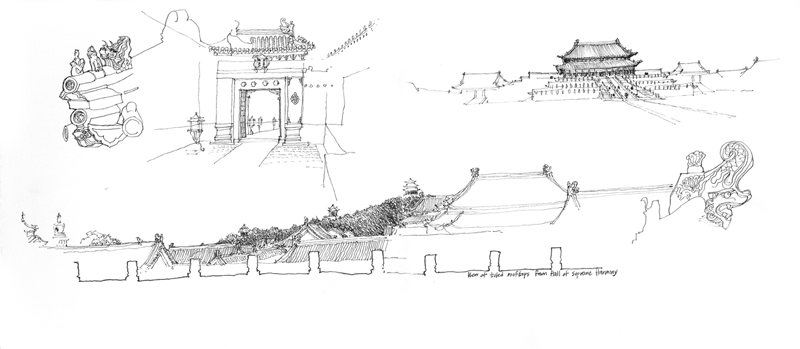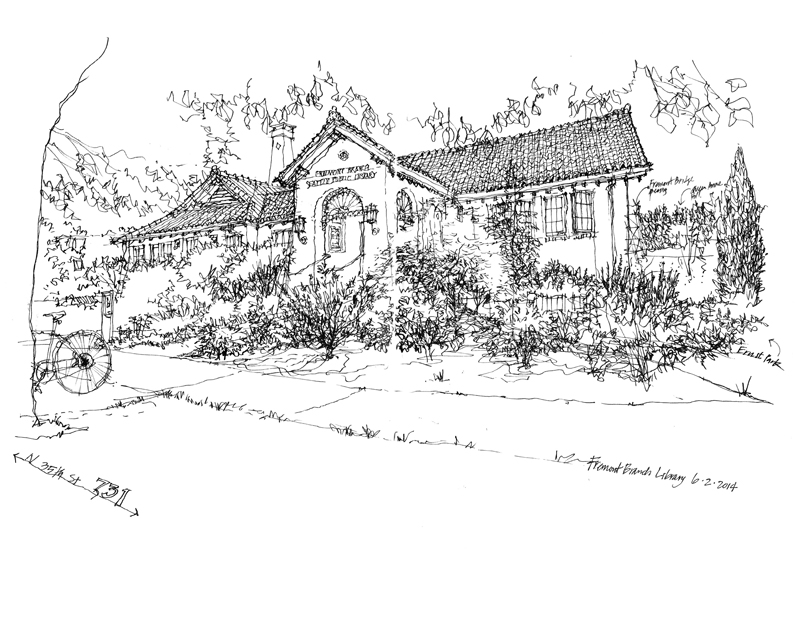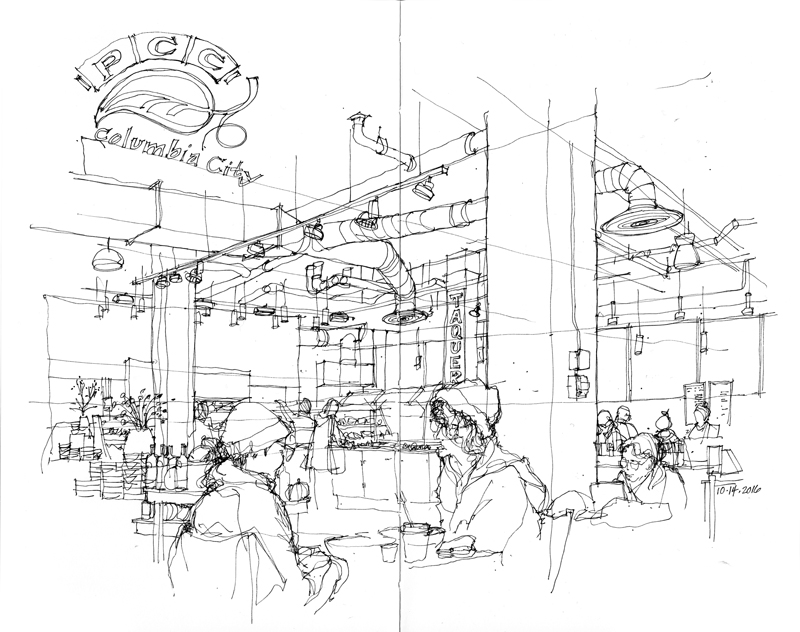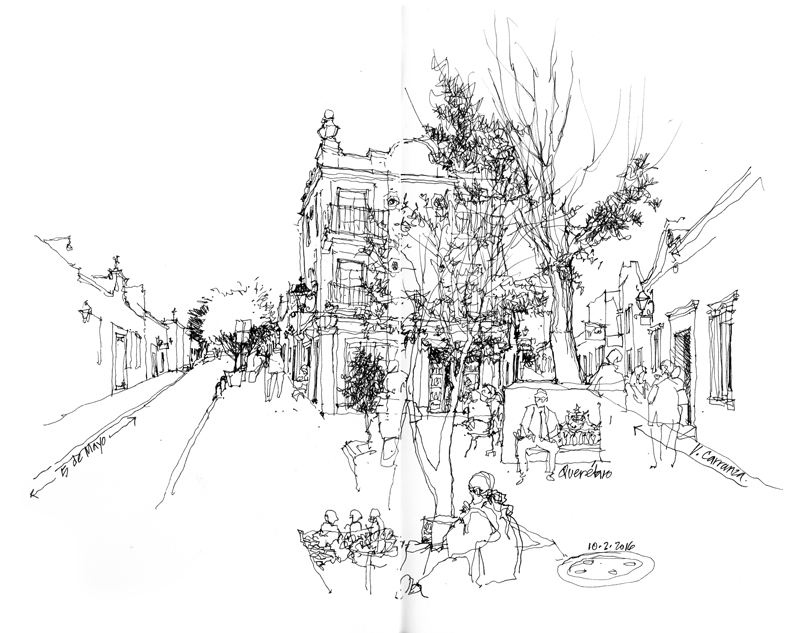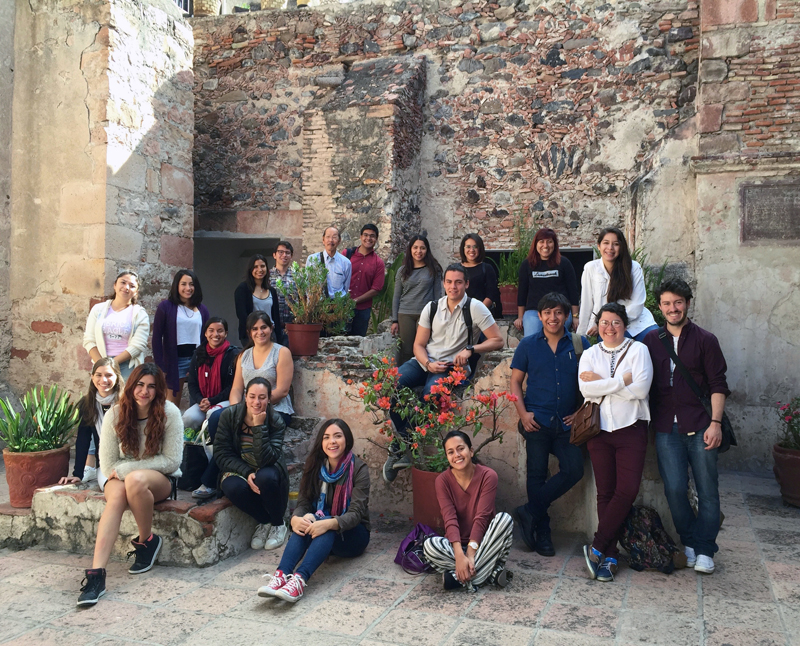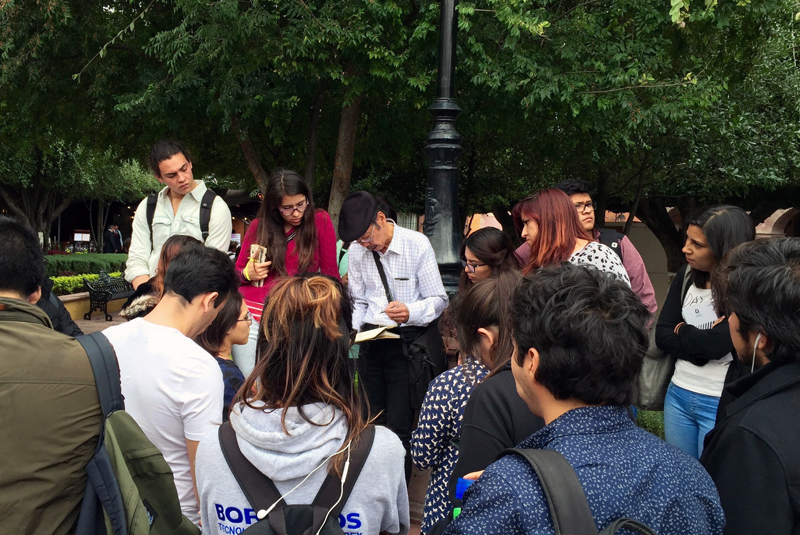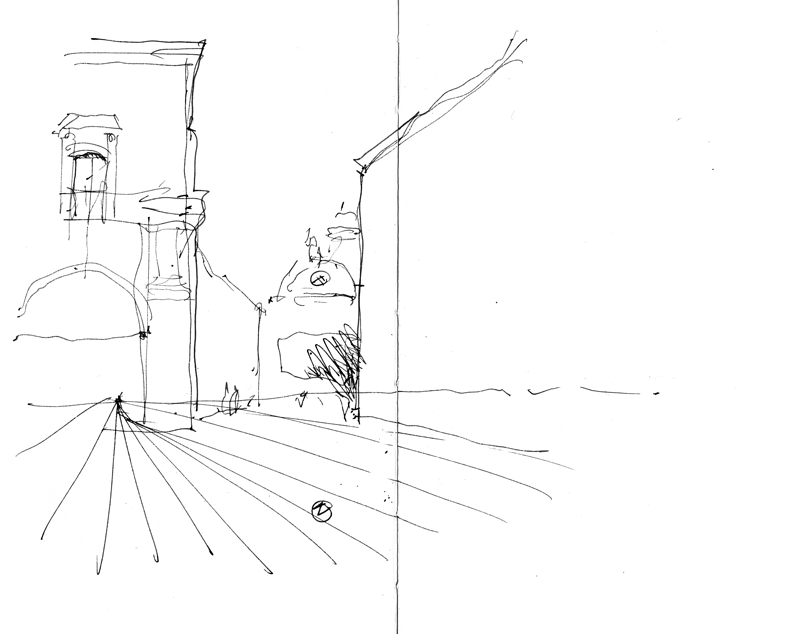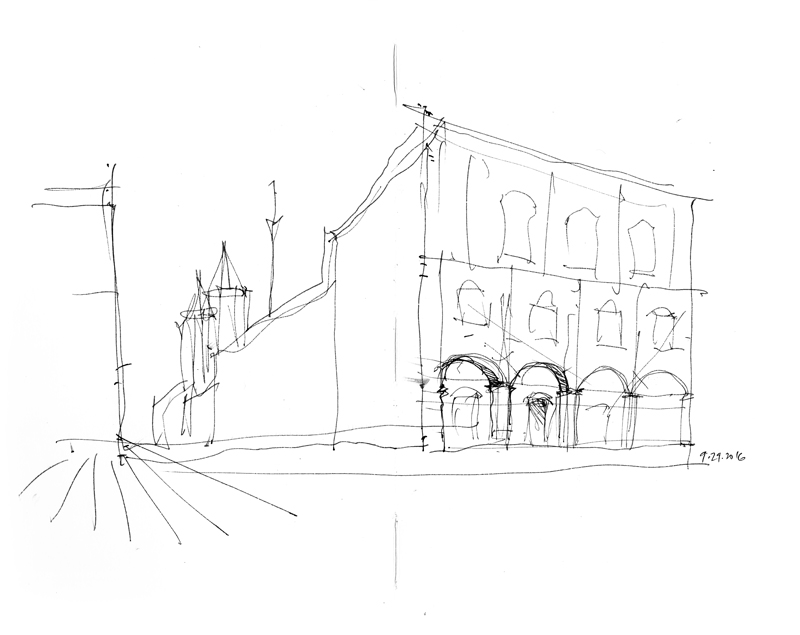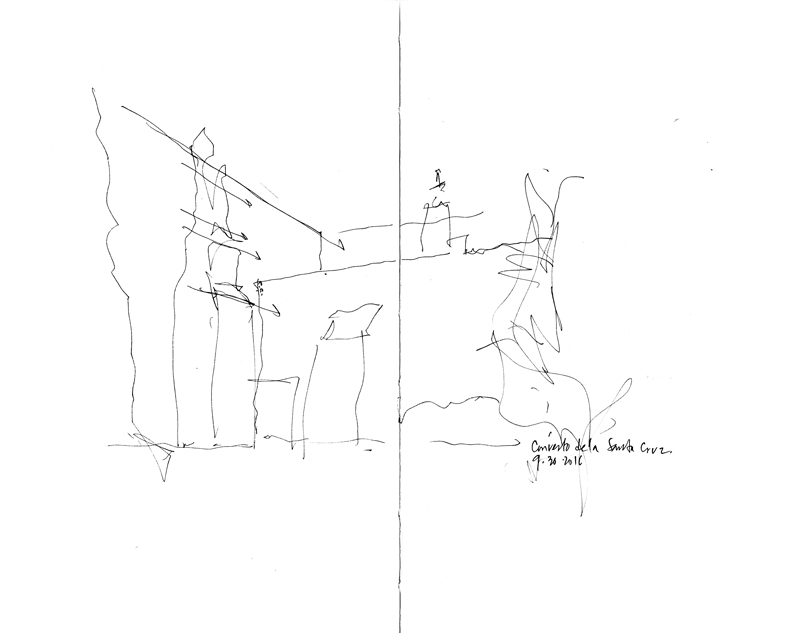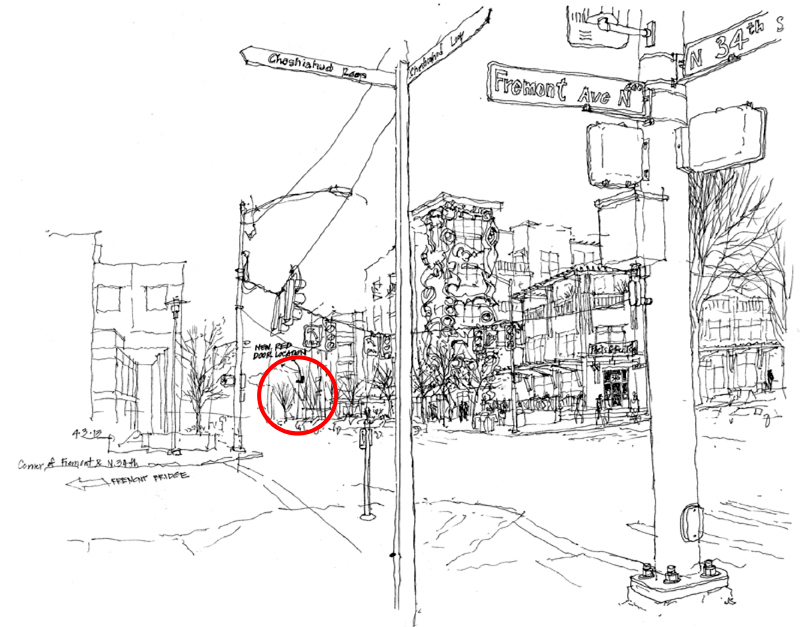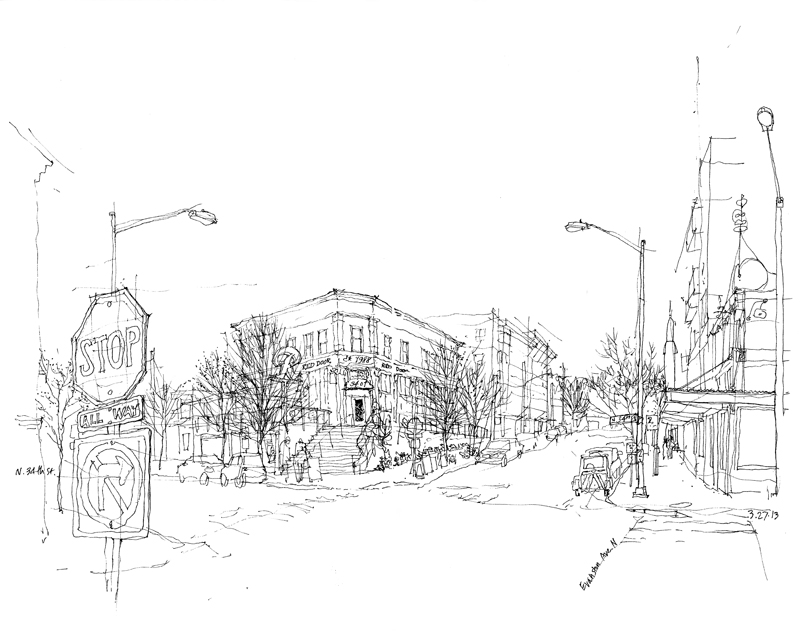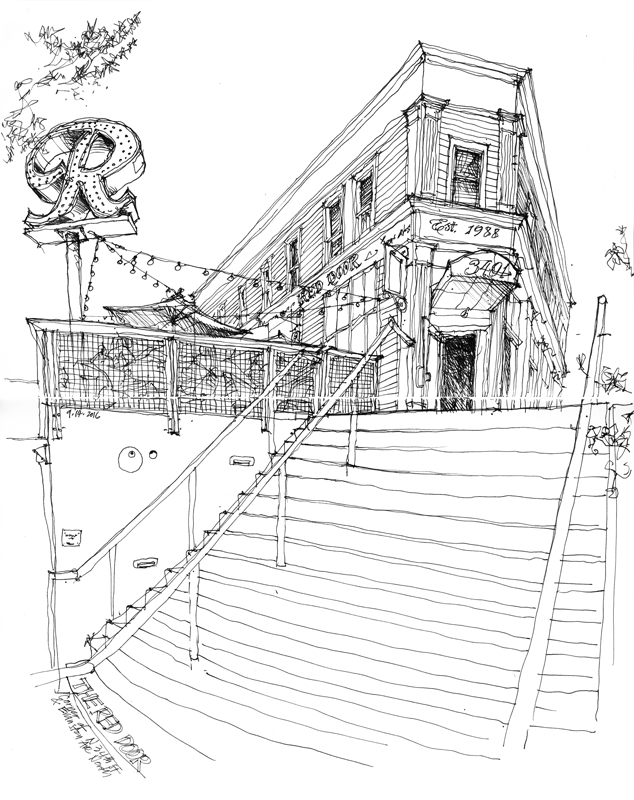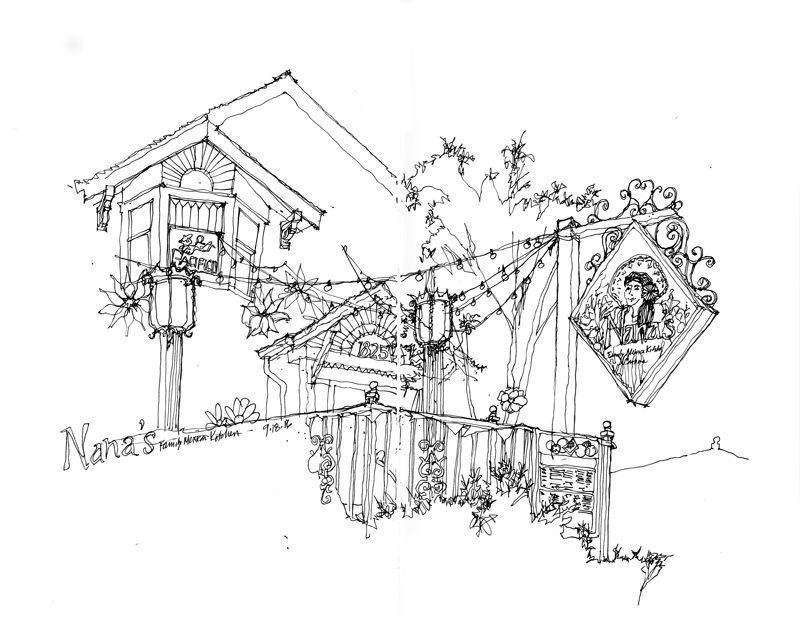I returned to McGraw Square last week but instead of finishing my original sketch, I decided to annotate it and to redraw the square from a different perspective. I simply moved back about eight feet from my original position and in doing so, dramatically altered both the field of view and the drawing composition. This illustrates how the decision about where to position oneself is an important one when drawing on location and should not be taken lightly.
Sometimes It Just Doesn’t Work Out
I took the bus downtown a couple of weeks ago to do this drawing of McGraw Square, where 5th Avenue meets Stewart Street and Olive Way. My intention was to document an intersection where various modes of transportation converged—the elevated Monorail that was built for the 1962 World’s Fair and still travels a mile from Westlake Center to Seattle Center; the South Lake Union Streetcar line that runs 1.3 miles from this terminus to the south end of Lake Union; and the multiple buses routes that run east-west along Stewart Street. In addition, of course, there are all of the cars and pedestrians making their way through the downtown corridor.
But sometimes, things don’t work out as planned. Even though it was a fairly pleasant day, I just didn’t have the proper state of mind to finish the drawing. That’s okay. I intend to go back and finish it the next time clear weather is in the forecast.
Rome’s Rooftops
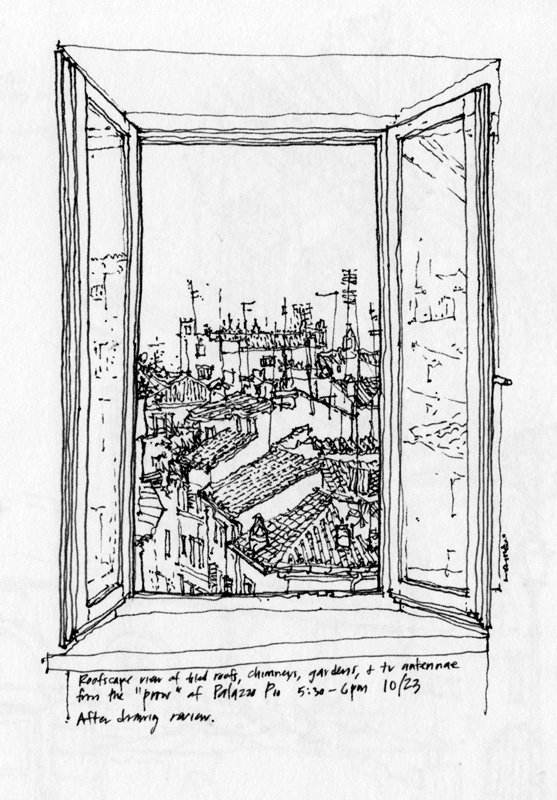
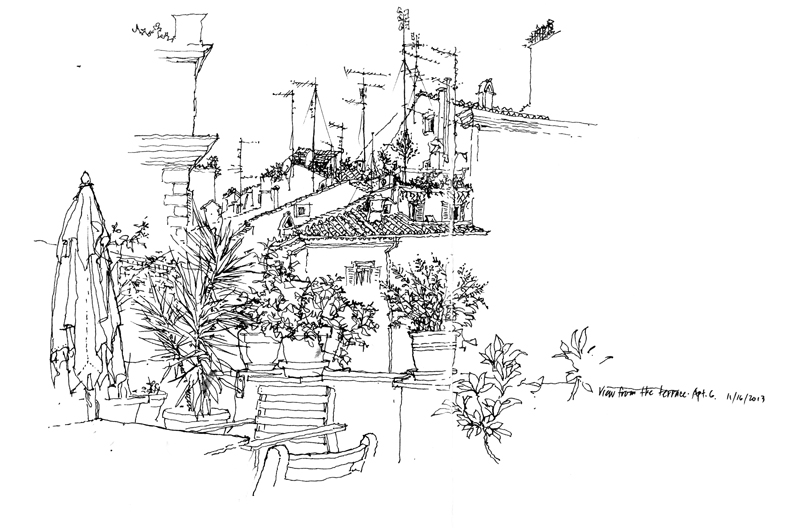 After a month of record rainfall and predictions of more rain to come, it’s becoming increasingly difficult to find areas sheltered enough from the weather to draw comfortably outdoors. So here I want to remind myself of the wonderful times I was privileged to spend in Rome where the fall weather was always sunny and warm.
After a month of record rainfall and predictions of more rain to come, it’s becoming increasingly difficult to find areas sheltered enough from the weather to draw comfortably outdoors. So here I want to remind myself of the wonderful times I was privileged to spend in Rome where the fall weather was always sunny and warm.
These two views are from the Palazzo Pio in Rome, which overlooks the Campo dei Fiori. If we bothered to look up rather than at the many historic structures and monuments one runs into in the Centro Historico, we would see that the rooftops are often filled with terraces, potted plants, tiny apartments, and, of course, the forest of TV antennas that are gradually giving way to satellite dishes.
Visual Notetaking
A few months ago, I came across an article about notetaking on NPR.org. In research that was originally published in Psychological Science, Pam A. Mueller of Princeton University and Daniel M. Oppenheimer of UCLA studied how notetaking by hand or by typing on a computer might affect learning. A quote from the article:
“When people type their notes they have this tendency to try to take verbatim notes and write down as much of the lecture as they can. (On the other hand) the students who were taking longhand notes in our studies were forced to be more selective — because you can’t write as fast as you can type. And that extra processing of the material that they were doing benefited them.”
One hypothesis that Mueller and Oppenheimer developed is that when a person is taking notes by hand, “the processing that occurs” improved “learning and retention.”
The thought occurs that this might hold true as well when we contrast the benefits of drawing from direct observation with those gained by taking a photo of the same scene. The active seeing that drawing on location encourages can often lead to better understanding and more vivid visual memories.
Green Lake Branch Library
Eight Seattle libraries were part of the 2,509 public libraries that Andrew Carnegie had funded from 1880 to 1929, both in the U.S. and around the world. The Green Lake Branch Library is one of the original eight and also one of the six which are still functioning as libraries today.
Designed by W. Marbury Somervell and Joseph S. Coté and opening in 1910, the Green Lake branch shares a common floor plan with the University and West Seattle branches but the three have differently styled exteriors. It is listed on the National Register of Historic Places and is also a landmark building listed by Seattle’s Landmarks Preservation Board.
Below are views of the Ballard and Fremont branches, two of the Seattle Carnegie libraries that I had drawn previously.
Stormy Weather
On a blustery, rainy Friday morning, I rode in a warm, dry Sound Transit Light Rail train from the UW campus to Columbia City, a neighborhood southeast of downtown Seattle. A small but dedicated group of Urban Sketchers had braved the stormy weather to meet there for an ad hoc sketch outing. Because of the constant beating down of wind-blown rain drops, I chose to seat myself in the new PCC market to draw this view of the interior. I find it interesting how grocery stores and supermarkets have increased the area they devote to the serving of prepared foods in their deli sections, relative to the traditional shelf space for fresh produce, dairy products, and canned goods.
Scenes from Querétaro
Here are two scenes I sketched our last day in Querétaro. The first is of the Plaza de Armas, also known as the Plaza de Independencia. Around its periphery are 18th-century mansions and outdoor cafes. To the right is Palacio de la Corregidora, former home of the city’s mayor Don Miguel Dominguez and his wife Josefa Ortiz de Dominguez, who is revered as a heroine of the Mexican War of Independence. Today, the palace serves as the seat of the executive branch of the state government.
The second view is where Calle Venustiano Carranza splits off of Calle 5 de Mayo, another bifurcated view similar to the ones I drew in Tacoma a few weeks ago.
Santiago de Querétaro
Just returned from spending a few wonderful days in Santiago de Querétaro, a colonial town founded in 1561 by Franciscan priests in the high desert country north of Mexico City. There I led a group of students from the Tecnológico de Monterrey on a drawing tour of the Centro Historico, a UNESCO World Heritage site. Below the group photo taken in a courtyard of the Convento de la Santa Cruz are a few of the quick sketches I did to demonstrate how to compose the perspective structure of the scenes the students were drawing. Many thanks to Professor Paola Gamez Pouzou for her gracious and generous assistance during the two days of workshops.
Points of View
Having selected a subject, we can view it from different vantage points. To illustrate, here are three views of The Red Door Ale House in Fremont. The first focuses on the intersection of Fremont Avenue North and North 34th Street but the circle indicates the location of the Red Door a block to the west. The second is a contextual view from across the street that shows how the original structure sits atop a concrete parking garage after being moved in 2001 to make way for a new development a block away. The third is much closer, from the bottom of the concrete stairs that lead up to the front entrance. So having selected a subject for a drawing, we still have options for framing and contextualizing a view.
Upper Queen Anne Hill
On what turned out to be a beautiful Sunday morning after a few cloudy, showery days, the Seattle Urban Sketchers group met in the upper Queen Anne neighborhood just north of downtown. As I was viewing the subject of my first sketch, Nana’s Mexican Family Restaurant, I realized that the scene presented a multitude of details that would overwhelm the eye. I therefore chose to draw very selectively, leaving a lot of white space for the imagination to fill. This approach required the selection of a dominant element—in this case, the sign above the sidewalk—and then proceeding so that the drawing would lead the eye from one area of interest to the next. The key is never to lead the eye off the page.
I used a similar approach for the remaining two drawings I was able to do during the morning session.

